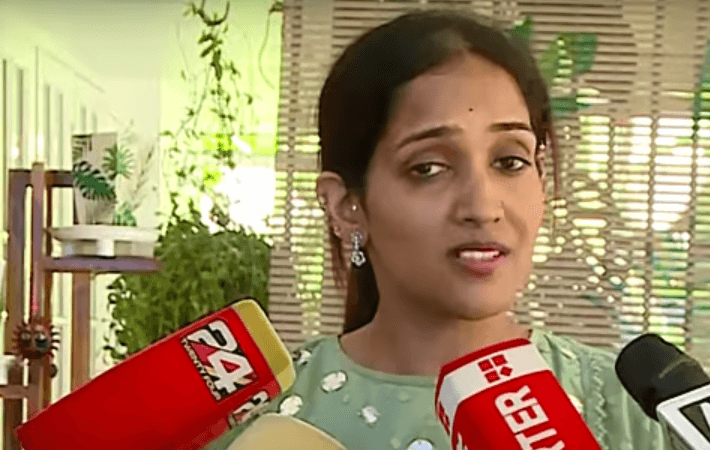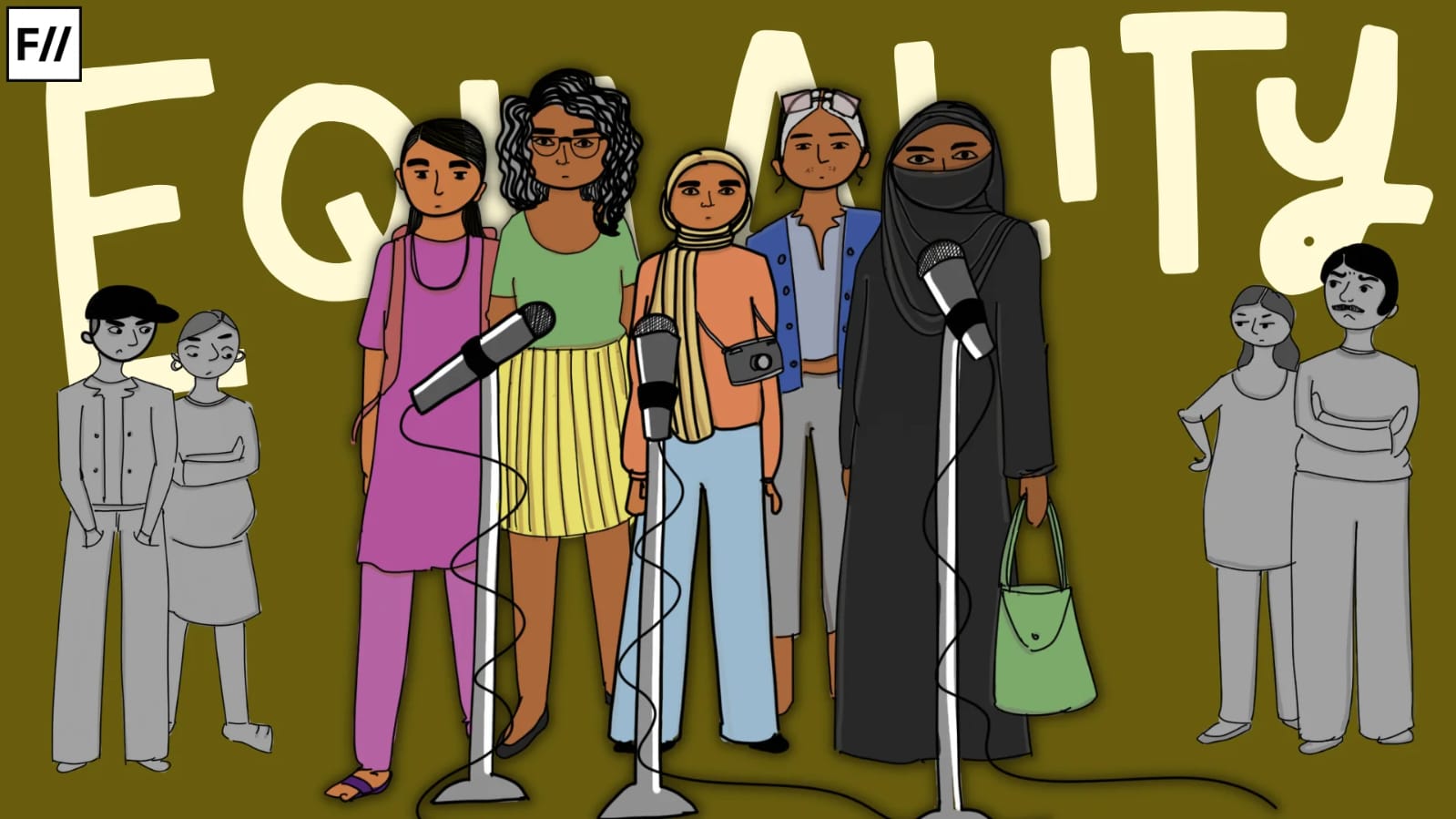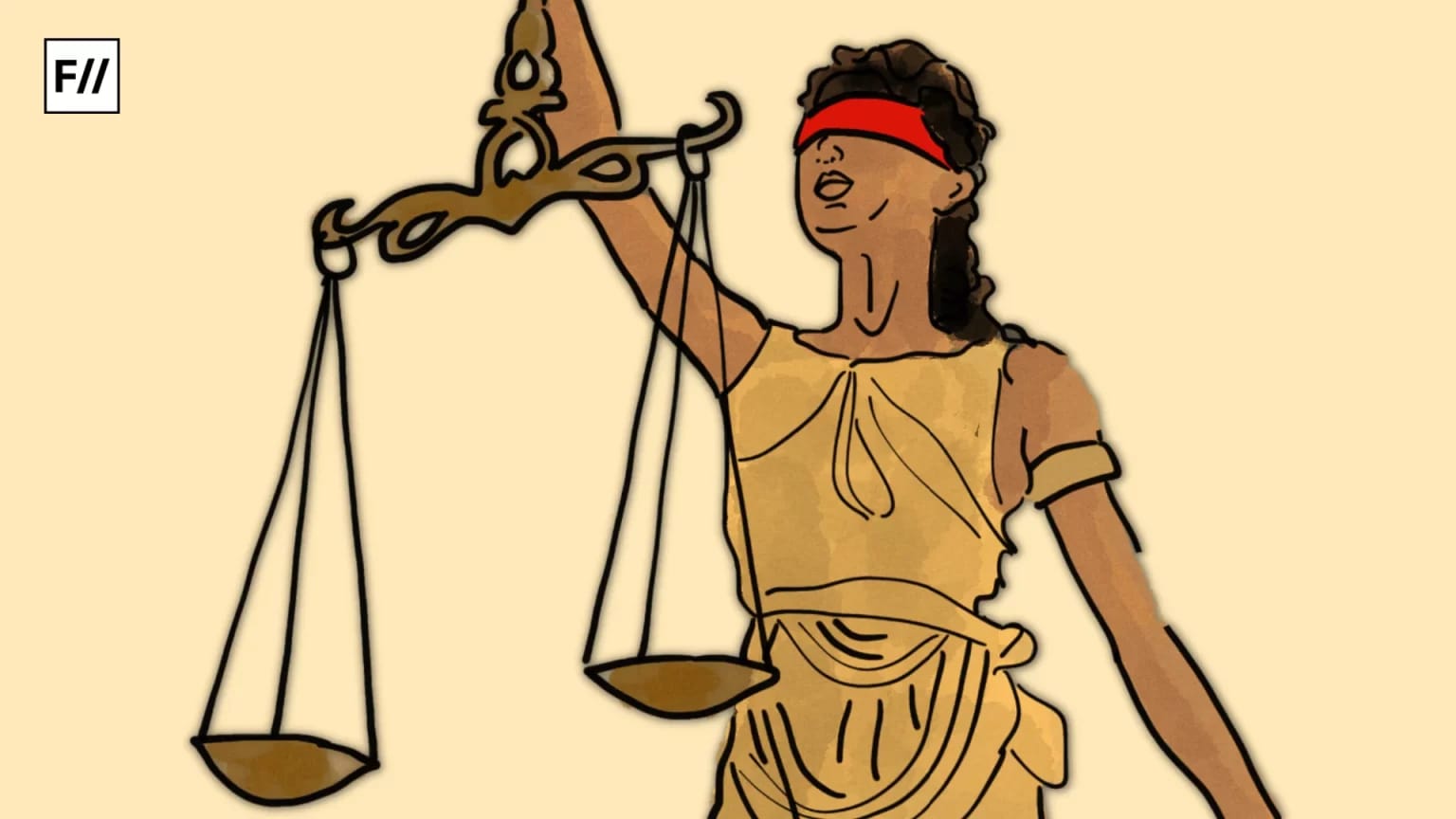Hindutva has a dichotomous relationship with women. Its proponents teeter between being ardent champions of women’s rights when such a position enables them to parrot and further Islamophobic narratives and meet their political ends, and conducting coordinated harassment campaigns against women for resisting or opposing the ideology.
When women don’t bend to Hindutva’s will and stand up against its rancid and divisive rhetoric, they are incessantly harassed, subjected to threats, and become the recipients of vile misogyny. The aftermath of the Pahalgam attack has brought the issue into glaring focus, with victims being harassed and threatened over their refusal to become props for the Hindutva agenda.
The brunt of this harassment has been borne by Himanshi Narwal, a survivor of the attack. Narwal’s husband, a naval officer, was killed in Pahalgam on April 22, 2025. In the days following the attack, Narwal became a darling of the right, with Hindutva outfits and proponents claiming her grief and loss to further Islamophobic rhetoric and for political messaging.
However, when Narwal told the press she doesn’t want hate to be directed at Kashmiris or Muslims and only wishes for peace and wants justice for her deceased husband, the right-wing ecosystem turned on her. She was subjected to misogynistic trolling, slut-shaming, and threats.
While the nature and scale of Narwal’s harassment became a national talking point, such coordinated harassment and misogyny are par for the course within the Hindutva ecosystem, where women are either mouthpieces for the ideology, props to further propaganda, or targets. Right-wing anger towards Narwal for refusing to become a tool for propaganda or allowing for the exploitation of her husband’s death and her grief for ideological pursuits has turned her into an enemy of Hindutva.
India’s military response to the Pahalgam attack, conducted in the early hours of May 7, 2025, was called ‘Operation Sindoor.’ A seeming nod to the widows of the men who died in Pahalgam, especially Himanshi Narwal. However, while Hindutva uses women and the idea of ‘avenging,’ them for a showcase of nationalistic strength, Indian women are faced with a binary: align with the far-right ideology or resist it and risk vicious harassment.
Women as Hindutva props
Within the ambit of Hindutva politics, women are merely props who can be exploited to perpetuate Islamophobia. Narwal’s is not an isolated case; she’s only one name in a long list of women who have had large-scale, coordinated hate campaigns launched against them for their refusal to lend themselves to the Hindutva cause. Even among the victims of the Pahalgam attack, Narwal is not the only one who was subjected to harassment.

Arathi Menon, another survivor, whose father was killed in Pahalgam, has been subjected to similar harassment for telling the press that two Muslim locals helped her and her children following the attack and that she considers them to be her brothers.
Narwal and Menon didn’t parrot the divisive Islamophobic rhetoric of the right, and they were relentlessly harassed for it. A mainstay of Hindutva propaganda is the ‘protection,’ of women, but when women stand up against being used as political props, they dilute Hindutva rhetoric, evoking anger. Hindutva is deeply rooted in traditional ideas of masculinity; in patriarchal societies, this confluence of traditional masculinity and paternalistic notions of women’s honour and safety enables the use of women as effective propaganda. At the centre of Himanshi Narwal’s harassment were rumours that she was, or continues to be, romantically involved with Muslim men.
This perfectly illustrates how political ideologies rooted in masculinity exploit patriarchal frameworks to further their agendas. The patriarchal notion of women’s honour and the subsequent focus it places on endogamy and women’s chastity is fertile ground for political exploitation when attached to Islamophobia. Hindu women are presented as being especially vulnerable to exploitation at the hands of Muslim men by drawing on patriarchal and sexist notions about women.
While Himanshi Narwal became the face of the tragedy, she also became a political pawn. An image of her sitting beside her deceased husband immediately following the attack was turned into a cartoon by BJP Chhattisgarh’s official handle in a now-deleted tweet to push a Hindu vs Muslim rhetoric and, presumably, as a shot at the caste census.
This serves as the basis for numerous far-right propaganda, with women featuring front and centre in a bulk of Islamophobic Hindutva rhetoric. ‘Love jihad,’ a Hindutva conspiracy theory that Muslim men court Hindu women in a coordinated effort to convert the latter to Islam en masse, utilises the same playbook – perpetrating Islamophobia by exploiting patriarchal notions about women’s naivety and the risk of exogamous unions and drawing on ideas of toxic masculinity by positioning Hindu men (and by that extension Hindutva outfits and governments) as the ‘saviours,’ of these women.
Other propaganda, like that of ‘land jihad,’ preceding the Jharkhand elections, follows along the same lines. The BJP’s 2024 election campaign in the state featured alarmism over ‘Bangladeshi infiltrators,’ flooding the state and encroaching on Hindu and Adivasi land. The term ‘land jihad’ was used extensively in the run-up to the election by Hindutva outfits and political leaders to refer to the alleged phenomenon of Muslim men luring and marrying Adivasi women to gain access to their ancestral lands. Even the Hindutva whataboutery regarding minority rights in Muslim-majority nations – often to justify or distract from the poor treatment of minorities in India – utilises images of women and girls and instances of violence against them.
The very name ‘Operation Sindoor,’ evokes notions of traditional masculinity and the protection of women by avenging their loss. While Himanshi Narwal became the face of the tragedy, she also became a political pawn. An image of her sitting beside her deceased husband immediately following the attack was turned into a cartoon by BJP Chhattisgarh’s official handle in a now-deleted tweet to push a Hindu vs Muslim rhetoric and, presumably, as a shot at the caste census. The AI image, in the style of Ghibli animation (due to the recent popularity of the AI-Ghibli trend), read, ‘Dharam poocha, jaati nahin (they asked their religion, not caste).’
The widows that the government is allegedly avenging now are the widows whose grief and loss they were turning into a cartoon for their political benefit last week. Himanshi’s refusal to vilify common Kashmiris or Indian Muslims, despite the Pahalgam tragedy and the subsequent rise in anti-Muslim violence across the country, dealt a significant blow to the Islamophobic messaging that the far-right was promoting by exploiting her.
Coordinated harassment campaigns
The Hindutva harassment of women following Pahalgam doesn’t end with survivors of the incident like Narwal and Menon. Following escalating tensions with Pakistan and calls for de-escalation from the left, numerous people, especially women, were relentlessly harassed for their anti-war stance. While trolling, threats, misogyny, and demands of legal action became standard right-wing responses to calls for de-escalation, prominent women who made such statements or took a critical stance against the government were relentlessly harassed, doxxed, and had legal cases filed against them.

The Wire journalist Arfa Khanum Sherwani was doxxed, and her phone number and email were uploaded online. The tweet containing her information was retweeted by a notorious Hindutva troll account, ensuring it reached the hundreds of thousands of users who follow the account. This is only one of numerous instances where these accounts have doxxed women who take a stance against Hindutva. Last year, the same account was responsible for doxxing journalist Rana Ayyub.
Days later, India’s Foreign Secretary Vikram Misri was forced to lock his X account following right-wing harassment that was motivated by the announcement of a ceasefire with Pakistan. The government’s decision to de-escalate drew Hindutva ire, and Misri, as the face of the decision, became a target. Misri’s daughter, Didon Misri, received the bulk of the harassment, with numerous offensive and sexually coloured remarks being directed at her.
Hindutva targeting of Didon Misri worsened when numerous right-wing X (formerly Twitter) accounts tweeted about her being a contributor at The Wire and falsely claimed that she provided free legal aid to Rohingya refugees in India. As per fact-checker and Alt News co-founder Mohammed Zubair, a notorious Hindutva account was first responsible for targeting Didon Misri. As per Alt News, this account and the aforementioned account, which doxxed Ayub last year and retweeted Sherwani’s personal information, are run by the same man.
However, such right-wing harassment of women is not a phenomenon limited to one person or a few X accounts. In the days following the Pahalgam attack, a prominent Hindutva X account with nearly 300,000 followers tweeted a sexually explicit and degrading poem as a response to a Pakistani political analyst. The verses were copied from a tweet from another right-wing account. This became somewhat of a trend, and several Hindutva accounts reposted the original verses or modified (but equally explicit and degrading) versions in response to the tweets of several Indian and Pakistani women. Such actions are committed by Hindutva troll accounts routinely and with impunity.
Following Pahalgam, many women like Neha Singh Rathore, Shaila Negi, and Madri Kakoti (Dr Medusa on Twitter) who have spoken against the government or called out Islamophobia, have also been subjected to incessant harassment and threats. Two of them (Rathore and Kakoti ) have also had FIRs filed against them. On the one hand, Hindutva proponents and the government are using women for rhetoric, but on the other, women continue to face harassment and be subjected to arbitrary state action for refusing to march in step with the far-right agenda. While the threats Hindutva claims to ‘protect,’ women from are often imagined, the threat women face from the targeted, large-scale harassment driven by the online Hindutva ecosystem is all too real.
About the author(s)





Akshita- would be believable if you gave actual examples of the “harassment” you speak of in the article. Also why Indian feminists never speak out on the obvious mysogyny in Islamic communities. Your articles and this website have a very clear bias. Meaning we can’t take anything seriously.